The mechanical properties of metals play a crucial role in metal selection. Each application has specific loads and environments the selected metal must endure without failure or significant deformation.
Naturally, this applies to welding as well. The welded joint must behave similarly to the base metal. In rare instances, you may want the joint to behave differently. But, this also requires knowing the mechanical properties of metals.
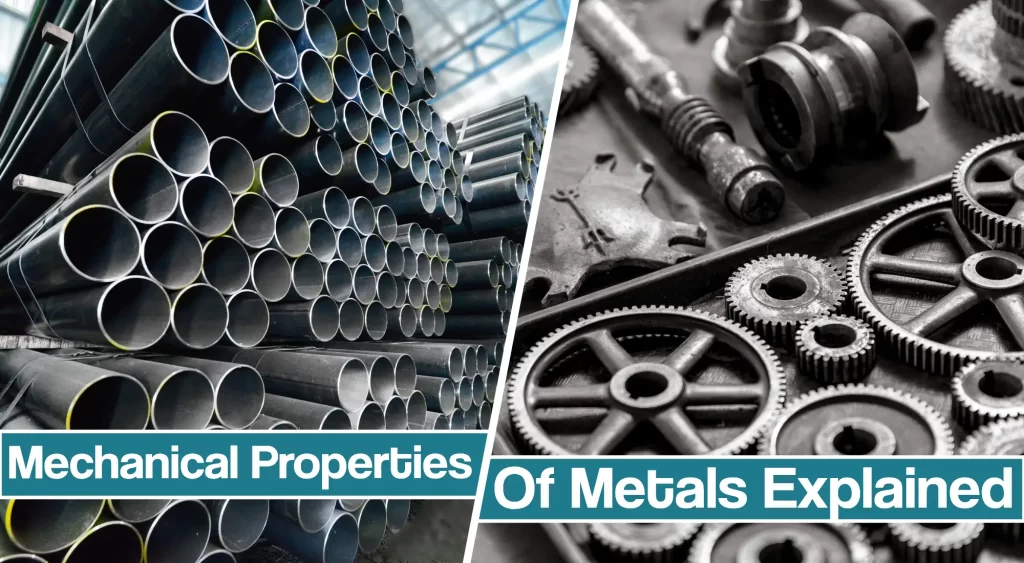
This article will teach you the basics of the essential metal mechanical properties from the welder’s perspective. Material science is a vast field. So, we’ll focus on what matters the most for joining metals like steel, stainless steel, aluminum, copper, titanium, and other commonly welded materials.
Mechanical Properties Of Metals Explained
Every metal exhibits multiple mechanical properties. Some properties of metals are complimentary, while others sit on opposite sides. For example, metal can’t be ductile and brittle at the same time. However, through heat treatment, we can alter the mechanical properties of metals.
This is why welders must understand the basics of metallurgy. By inappropriate heat treatment, filler metal selection, base metal selection, improper handling and storing of metal, and other inadequate treatment, you may jeopardize the needed joint’s mechanical properties.
Elasticity
Elastic deformation is the properties of metals that return to their normal shape after the load applied is removed.
Young’s modulus shows the elastic region or elastic range of the given metal.
Plastic deformation is when the plastic strain energy permanently deforms the metal.
It doesn’t return to its original shape anymore, even if the load is removed.
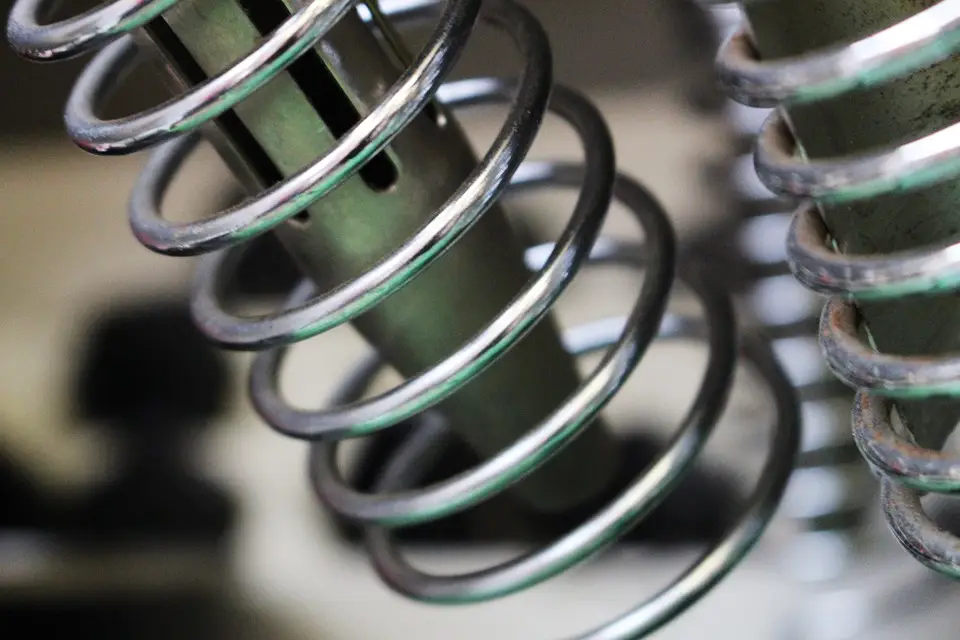
Ductility
Ductility is the metal property that allows it to experience permanently drawn out, twisted, bent, or otherwise changing the shape without cracking or breaking. Ductile materials experience a higher degree of elastic and plastic deformation before failing. That’s because their interatomic bonds can stretch as the force is applied.
Ductile metals are aluminum, zinc, copper, and soft steel like mild steel. These metals will experience less cracking post-welding as they cool down. That’s because the weld will pull the surrounding metal and the base metal has a high enough tensile strength to prevent cracks. Refer to our full guide on ductility in welding to learn more about how to avoid cracks and use metal’s ductile properties to your advantage.
Reduction of Area
Reduction of the area is obtained from the tensile test, and it shows the reduction of a cross-sectional area before the metal was pulled apart and after it broke. By dividing the original cross-sectional area and the post-breaking cross-sectional area, and multiplying the resulting value by 100, we get the percentage of reduction of area.
Brittleness
Unlike ductility, brittleness is a metal characteristic that determines how easily a material breaks without apparent elastic or plastic deformation.
For example, if a cast iron breaks, you can put the pieces back together like a puzzle, and there won’t be any plastic deformation of the original part. You can learn more about welding cast iron in our separate guide.
Welding brittle material is very challenging. High-strength steels and cast iron have high carbon content. This gives them additional strength but also makes them brittle.
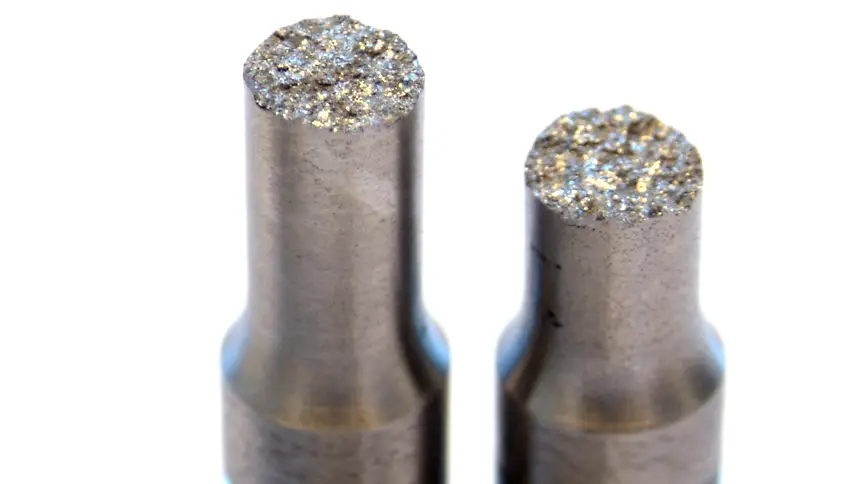
The biggest challenge when welding such material is the post-welding phase. Cooling down the welded area immediately causes cracks because the material can’t tolerate the internal stress formed between the weld and the base metal. So, it’s necessary to employ advanced post-weld heat treatment.
Hardness
Hardness determines how much resistance a metal exhibits to penetration.
Many metals improve hardness when heat-treated or after they experience cold working.
The Brinell hardness number is proportional to the load or test force of a hardened steel ball to the calculated curved area of the indentation formed.
The Brinell-hardness machine presses the steel ball into the tested sample material and depending on the indentation depth, the hardness is determined.
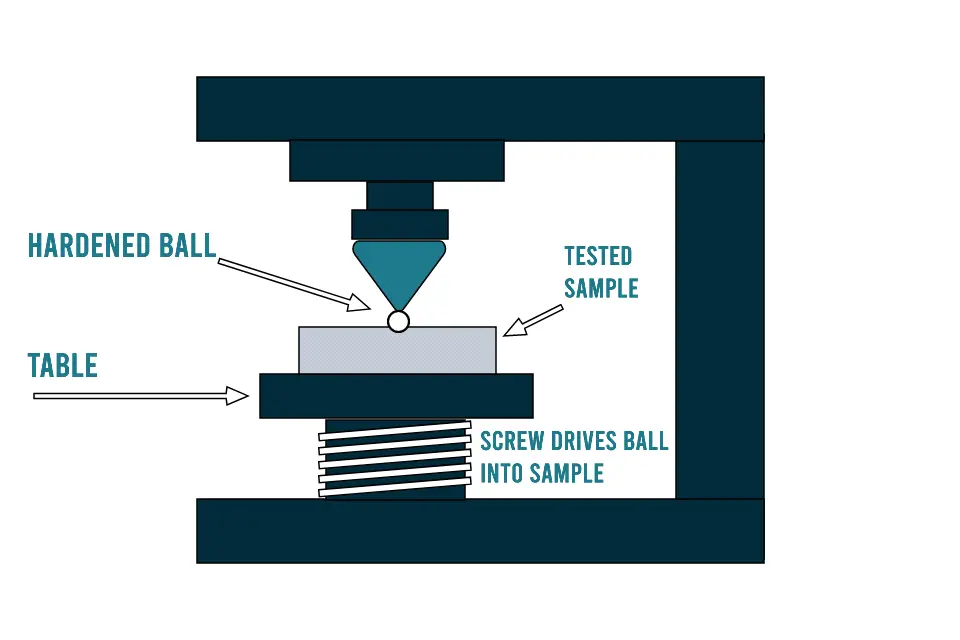
Toughness
Toughness shows the potential of the material to absorb shocks and impact loads by deforming without fracturing.
For metal to rate high on the toughness scale, it must have adequate elasticity, ductility, and yield strength. Cracks, notches, grooves, and tool marks can severely reduce the toughness of some metals.
The impact testing machine swings a hammer and hits the tested piece of material that has a small notch.
The swing energy is measured at the starting point and end of the swing without hitting the tested piece. The process is repeated but the tested piece and the difference in the energy at the end of the swing show us how much energy the tested material has endured.
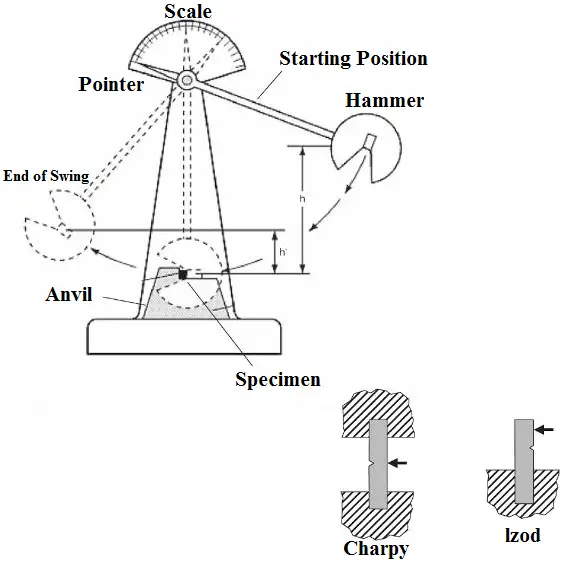
Strength
Strength is the property of metal to endure deformation. The two most crucial strength measurements for welding are tensile and compressive strength. But, there are also shear and torsional strengths that may be important depending on the subjected loads of the welded joint.
Tensile Strenght
Tensile strength refers to the material’s ability to withstand the force applied to pull it apart.
The two most important points when measuring the tensile strength are the yield strength and the ultimate tensile strength.
The yield strength represents the load necessary to achieve permanent deformation. ring the tensile loading, the yield point is when the metal stops stretching (elastic deformation) and begins to experience permanent elongation (plastic deformation).
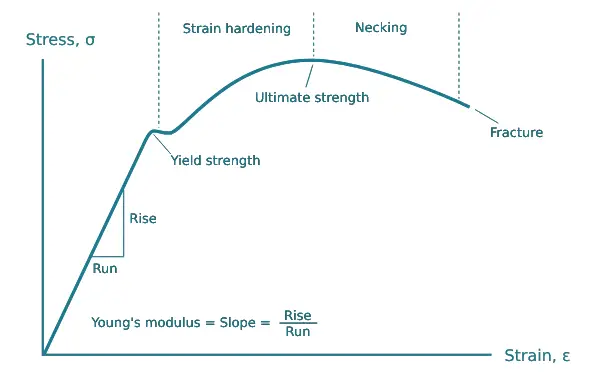
Those metals that experience a high degree of elastic and plastic deformation are ductile materials, but more precisely, we call them elastic materials. The ultimate tensile strength is a force necessary to break the metal part. It’s the maximum strength developed in the material before failing suddenly after this point is reached.
Young’s modulus or modulus of elasticity in tension or compression, and measures compressive stiffness. It represents the stress-strain curve, and we can read from its diagram the necessary tensile load for yield point, yield strength, and ultimate tensile strength.
Compressive Strength
Compressive stress applied to material will crush it if the compressive strength is not high enough to resist the applied load. Brittle, but hard materials, like cast iron and high-strength steels, have a much higher compressive strength than tensile strength.
Shear Strength
Shear strength is the material’s ability to resist the shear stress that is trying to split the material apart. The acting forces are not in the same plane but are opposing and in a straight line.
Torsional Strenght
Torsional strength is the material’s resistance to a twisting force. This is a complicated problem in material science because there are multiple internal and external forces acting together. A good example is a steam turbine rotor, whose shaft is exposed to a torsional load.
Malleability
Unlike ductility, the malleability of metal is its ability to deform plastically under compressive stress without breaking. Good weld malleability is necessary if the welded part will be machined with compressive forces. So hammering, extruding, rolling, and similar processes require malleable metal and welded joints.
Mild steel has excellent malleability, while cast iron, for example, has no malleability and will break if you try to hammer it.
Fatigue Strength
Fatigue strength is the highest strength that a metal can withstand for a large number of cyclical reversals of load.
If the element is constantly experiencing a change in load-carrying forces so that the loads switch from compressive stress to tensile stress, it must have the necessary fatigue strength.
The best example is the aviation industry. Planes must be made of metal and joined with welds with sufficient fatigue strength because the airplane will experience rapid transitions in the nature of the applied loads.
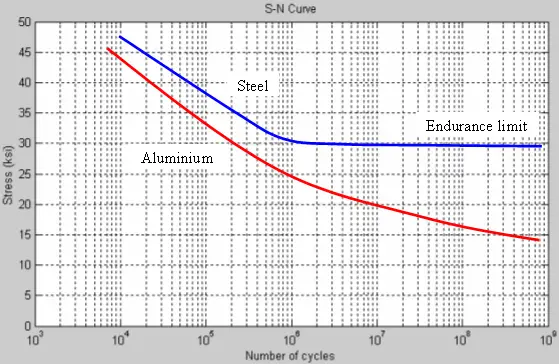
Conclusion
Mechanical properties of metals are determined using tests, like a tensile test, for example. It is necessary for welding to know how ductile material is, its elastic limit, how it will handle nominal stress and applied stress, and its maximum load-carrying capacity.
But, there may be more properties for a mechanical engineer to consider, depending on the environment and external load the welded joint is subjected to.
Resources:
- Mechanical Properties and Working of Metals and Alloys
- Mechanical Properties of Metals: Atomistic and Fractal Continuum Approaches By C. W. Lung, Norman Henry March
- Metals and How To Weld Them by Theodore Brewster Jefferson, Gorham Woods





